Andrew J. S. Hamilton (JILA, U. Colorado, Boulder)
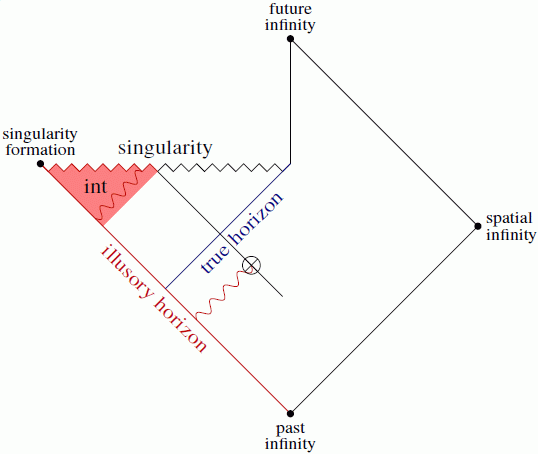
A Penrose diagram consistent with general relativity, quantum field theory, and causality, that evades any firewall paradox. (Why?)
Andrew J. S. Hamilton (JILA, U. Colorado, Boulder)

A Penrose diagram consistent with general relativity, quantum field theory, and causality, that evades any firewall paradox. (Why?)
Title:
Black Holes: Complementarity or Firewalls?
Abstract:
We argue that the following three statements cannot all be true:
| Perhaps the most conservative resolution is that the infalling observer burns up at the horizon. |
The paper caused a mini-storm of positive and negative reaction on the arXiv.
AMPS: “To restate our paradox in brief, the purity of the Hawking radiation implies that the late radiation is fully entangled with the early radiation, and the absence of drama for the infalling observer implies that it is fully entangled with the modes behind the horizon. This is tantamount to cloning.”
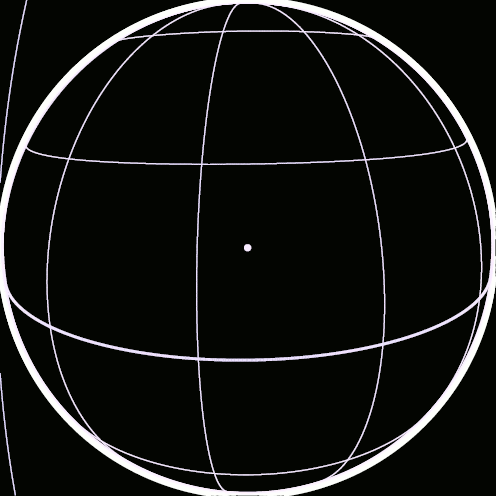
| Hawking emission results whenever an observer watches an accelerating emitter. |
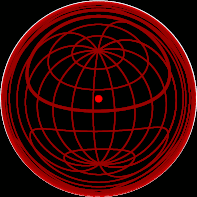 Waves that are pure positive frequency (positive energy)
in the emitter's frame
translate to a mix of positive and negative frequencies in the
observer's frame.
The vacuum in any frame is defined to be the absence of
any positive frequency waves.
The emitter's vacuum (“in”-vacuum)
is therefore not the same as
the observer's vacuum (“out”-vacuum).
Waves that are pure positive frequency (positive energy)
in the emitter's frame
translate to a mix of positive and negative frequencies in the
observer's frame.
The vacuum in any frame is defined to be the absence of
any positive frequency waves.
The emitter's vacuum (“in”-vacuum)
is therefore not the same as
the observer's vacuum (“out”-vacuum).
A classic calculation shows that if an observer watches an emitter who is accelerating away at constant acceleration for several acceleration times, the observer will see the emitter's vacuum as a thermal state at temperature T = κ/(2π).
Outside observers see
black hole horizons emit Hawking radiation
because matter that collapsed to form the black hole long ago
remains frozen at the horizon,
accelerating and redshifting into the indefinite future.
In the presence of black hole horizons, one of two sacred tenets of QFT must break down:
|
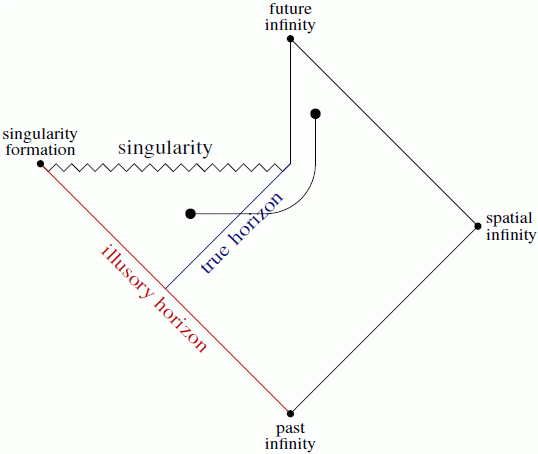
|
Information inside the black hole can reach an outside observer
only along a spacelike-separated path.
So if locality holds, evaporation cannot be unitary. Conversely if evaporation is unitary, then locality cannot hold. |
Locality (commutation of spacelike-separated field operators) implies that entropy is additive over any spacelike surface.
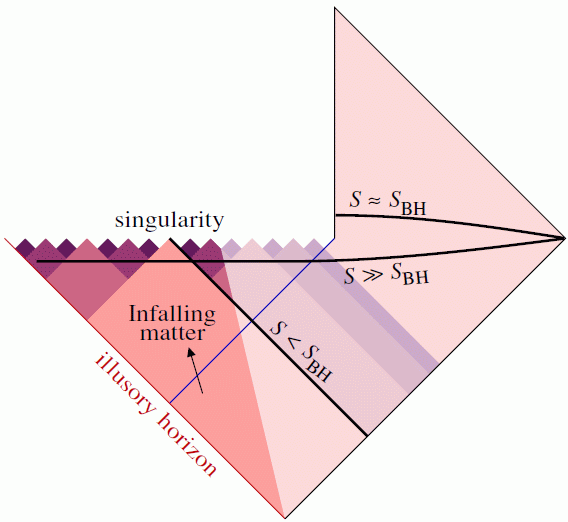
|
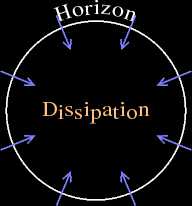 Feed a (charged, spherical) black hole with matter.
Allow (ohmic) dissipation inside.
The entropy accumulated along a spacelike surface near the
singularity can exceed the Bekenstein-Hawking (BH) entropy by
many orders of magnitude,
1010 times in the model of
Wallace, Hamilton & Polhemus arXiv:0801.4415.
This overproduction of entropy
(a) violates the notion that the entropy of a black hole is the BH entropy,
(b) violates the second law if the black hole subsequently evaporates
radiating only the BH entropy.
Feed a (charged, spherical) black hole with matter.
Allow (ohmic) dissipation inside.
The entropy accumulated along a spacelike surface near the
singularity can exceed the Bekenstein-Hawking (BH) entropy by
many orders of magnitude,
1010 times in the model of
Wallace, Hamilton & Polhemus arXiv:0801.4415.
This overproduction of entropy
(a) violates the notion that the entropy of a black hole is the BH entropy,
(b) violates the second law if the black hole subsequently evaporates
radiating only the BH entropy.
Solution? Impose locality only between points whose future lightcones intersect before hitting the singularity. |

|
Locality must hold between two spacelike-separated observers
whose future lightcones intersect,
to enforce causality in accordance with standard quantum field theory.
Therefore, if locality breaks down as holography postulates, then that breakdown must occur between spacelike-separated points whose future lightcones fail to intersect. Therefore, the quantum “interior” of a black hole, the region that is holographically connected to the outside, must be observer-dependent. The quantum interior must lie in that region whose future hits the singularity before intersecting the future of the observer. |
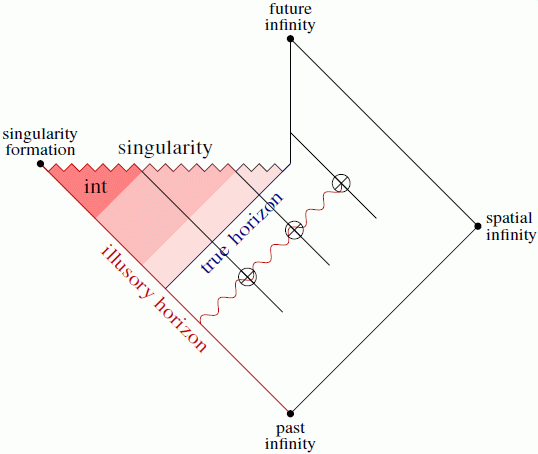
|
Observers observing the black hole
along the same past lightcone access different sets of
interior states of the black hole in the Hawking radiation that they see.
The more distant observer accesses more states.
This contradicts postulate (ii) of AMPS “low energy effective field theory valid beyond some microscopic distance from the horizon.” Hawking radiation becomes real only when an observer observes it. Note that the vast majority of the interior states are concentrated to the leftmost point of the Penrose diagram. |
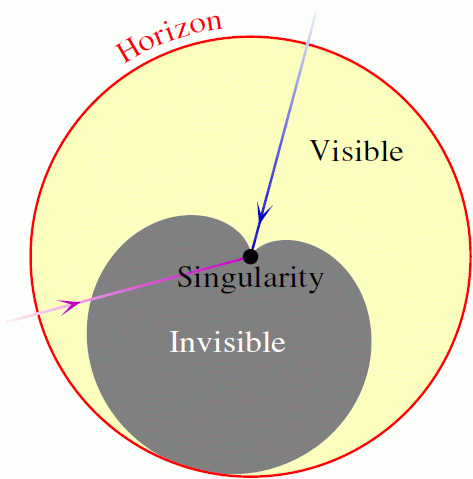
|
| Conclusions | ||||||||
| ||||||||